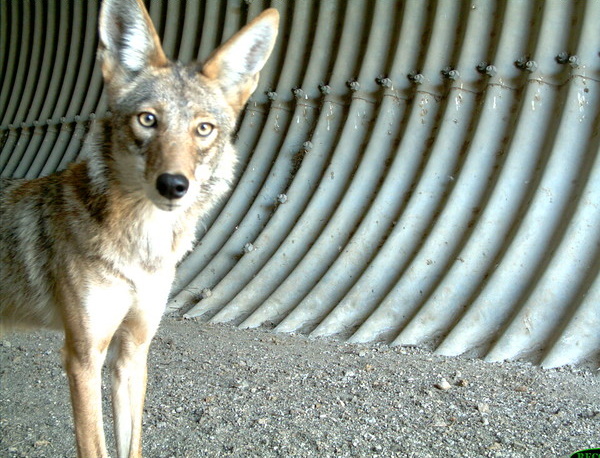Mountain Coyote
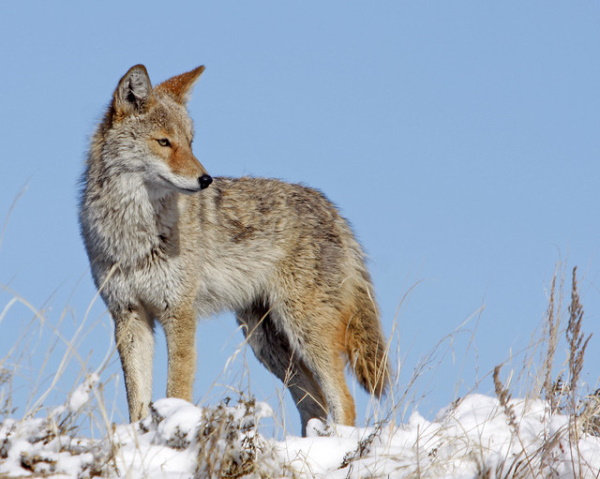
The Mountain Coyote (Canis latrans lestes) inhabits most of the Rocky Mountain region between southern British Columbia and northern Arizona. It can also be found in the eastern highland portions of California and the Rocky Mountain foothills of west-central Colorado. Typical of mammals that have evolved in colder areas, the Mountain Coyote sports smaller ears and a thicker coat. Larger Mountain Coyotes have been mistaken for small wolves at times due to the greyish tinge of their coats, a feature that is more prominent on the upper neck and across the back. (image via USFWS Mountain-Prairie)
Texas Plains Coyote
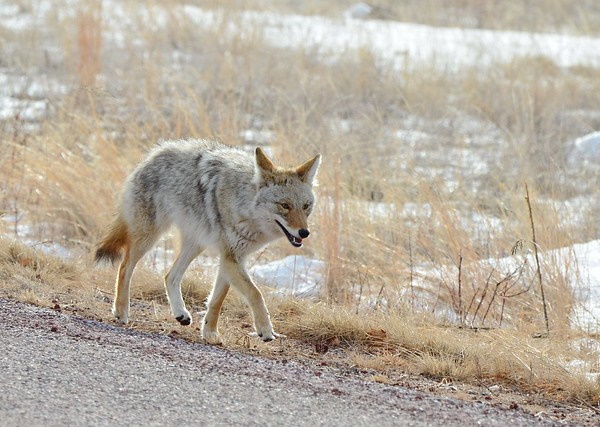
The Texas Plains Coyote (Canis latrans texensis) is one of three coyote subspecies prowling the Lone Star State: the Plains Coyote roams the northern Panhandle region and the Southeastern Coyote stalks the deciduous scrublands of East Texas. Texas Plains Coyotes can also be found in eastern New Mexico and northern areas of Mexico. Interestingly, there is at least one Texas Plains Coyote in residence at the Fort Worth Zoo. (image via Larry Lamsa)
Northern Coyote
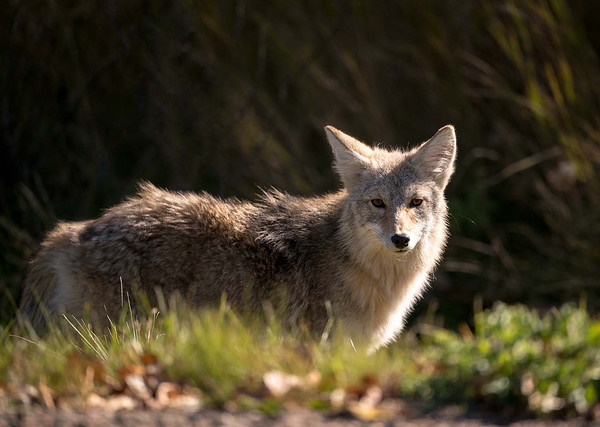
The Northern Coyote (Canis latrans icolatus) ranges from the north shore of Alaska down through the Yukon territory, then further south to cover most of British Columbia and Alberta. Since their habitat is mainly cold and mountainous, one might expect this coyote subspecies to have heavier coats and smaller ears – and indeed they do! Some Northern Coyote populations have begun to prey on fish in regions where bears were once more common. No word if their fishing poles were mail-ordered from the Acme Company. (image via Parks Canada Agency (1)_1)
Eastern Coyote
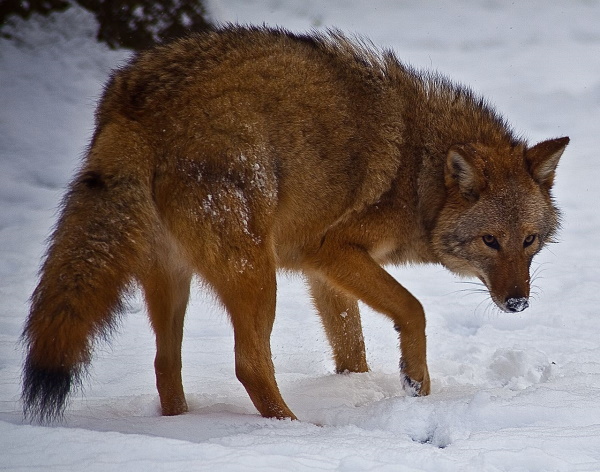
The Eastern Coyote has an unusual subspecies name – Canis Latrans var. – because biologists aren’t quite sure it represents a bonafide coyote subspecies. Eastern Coyotes are actually more like hybrids: DNA studies peg their lineage at roughly 60% coyote, 15% western wolf, 15% eastern wolf and 10% domestic dog! These canids are bigger, bolder and toothier than their purebred coyote cousins so don’t get any ideas about petting these “puppies” or YOU could be the one doing the howling! (image via ForestWander Nature Photography)
Ever wondered what a Wile E Coyote’s worst nightmare might look like? Check out Rock Steady: The World’s 10 Most Amazing Balanced Stones!

